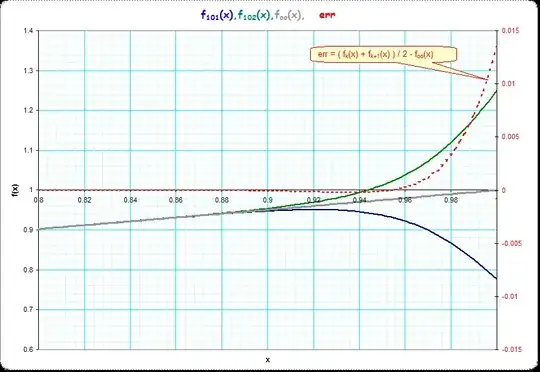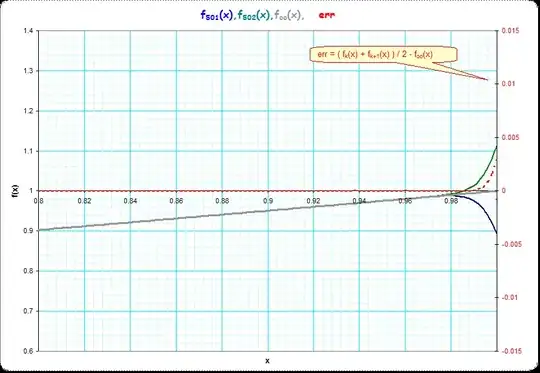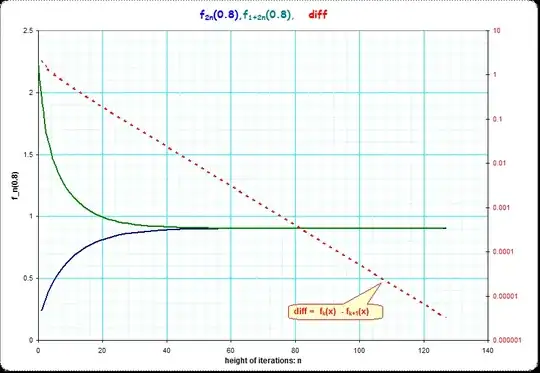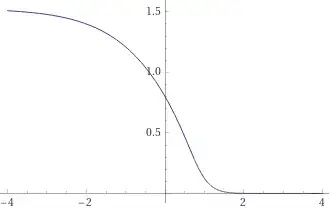(0) $\qquad$ Let basically $f_0(x)=\exp(x)$ and
then iterate $f_{k+1}(x)=\exp(x-f_k(x))$ a couple of times and assume $f(x)= \lim_{n\to \infty} f_n(x)$
(I) $\qquad$ First we assume all that in terms of a formal powerseries. Then this converges to something like
$$ f_\infty(x) \approx +0.567143290410 \\
+0.361896256635 x^{1} \\
+0.0736778051764 x^{2} \\
-0.00134285965499 x^{3} \\
-0.00163606514791 x^{4} \\
+0.000232149655570 x^{5} \\
+0.0000474223203353 x^{6} \\
-0.0000189444233824 x^{7} \\
-0.0000000208785458195 x^{8} \\
+0.00000117699067908 x^{9} \\
-0.000000179633602646 x^{10} \\
-0.0000000510936764494 x^{11} \\
+0.0000000206028966316 x^{12} \\
+0.000000000306827812731 x^{13} \\
-0.00000000154503877033 x^{14} \\
+ O(x^{15}) $$
using Pari/GP. Setting
$x=1$ it approximates nicely the value
$f(1)=1$. Moreover, for
$x=0$ it gives immediately the value
$\omega=0.5671432...=W(1)$
(II) $\qquad$ If we say
$t:=f_\infty(x) $ and
$t=\exp(x-t)$ then we can derive
$t \exp(t) = \exp(x)$ and thus
$ t=W(\exp(x)) = f_\infty(x) $ and this is
$1$ for
$x=1$ and
$\omega$ for
$x=0$ as before.
(III) $\qquad$ If we use the basic definition (but not as powerseries but as evaluated values) and take the mean
$g_k = (f_k(x) + f_{k+1}(x))/2$ for some (high) iteration
$k$ then
$err_k(x)= g_k(x) -f_\infty(x) $ shows a small difference-curve increasing with
$x \to 1$ but accordingly and in concurrence decreasing with
$k \to \infty$ , so it seems also by this limiting-process that the definition of the limit using the Lambert-W-definition makes sense.
For
(III) see the following pictures. The first picture shows
$f_{101}(x),f_{102}(x),f_\infty(x),err_{101}(x)$ It makes visually that it makes sense to look at the mean of the alternating values
$f_{101}(x)$ and
$f_{102}$, and also, that the difference of the mean and the
$f_\infty(x)$ is small but increasing somewhat when
$x \to 1$ (the scale for the
err-curve is at the rhs of the picture).

The second picture shows $f_{501}(x),f_{502}(x),f_\infty(x),err_{501}(x)$ and we see, that the two curves approximate the $f_\infty(x)$ curve much more which is displayed in the smaller $err_{501}(x)$

The third picture shows the rate of convergence improving by iterations. I use the value $x_0=0.8$ and document $t_n(x_0)=f_{2n}(x_0)$ and $u_n(x_0)=f_{2n+1}(x_0)$ for $1$ to $128$ iterations. We see that $t_n()$ and $u_n()$ converge well and the difference decreases by about one significant decimal digits by ca 12 iterations.





